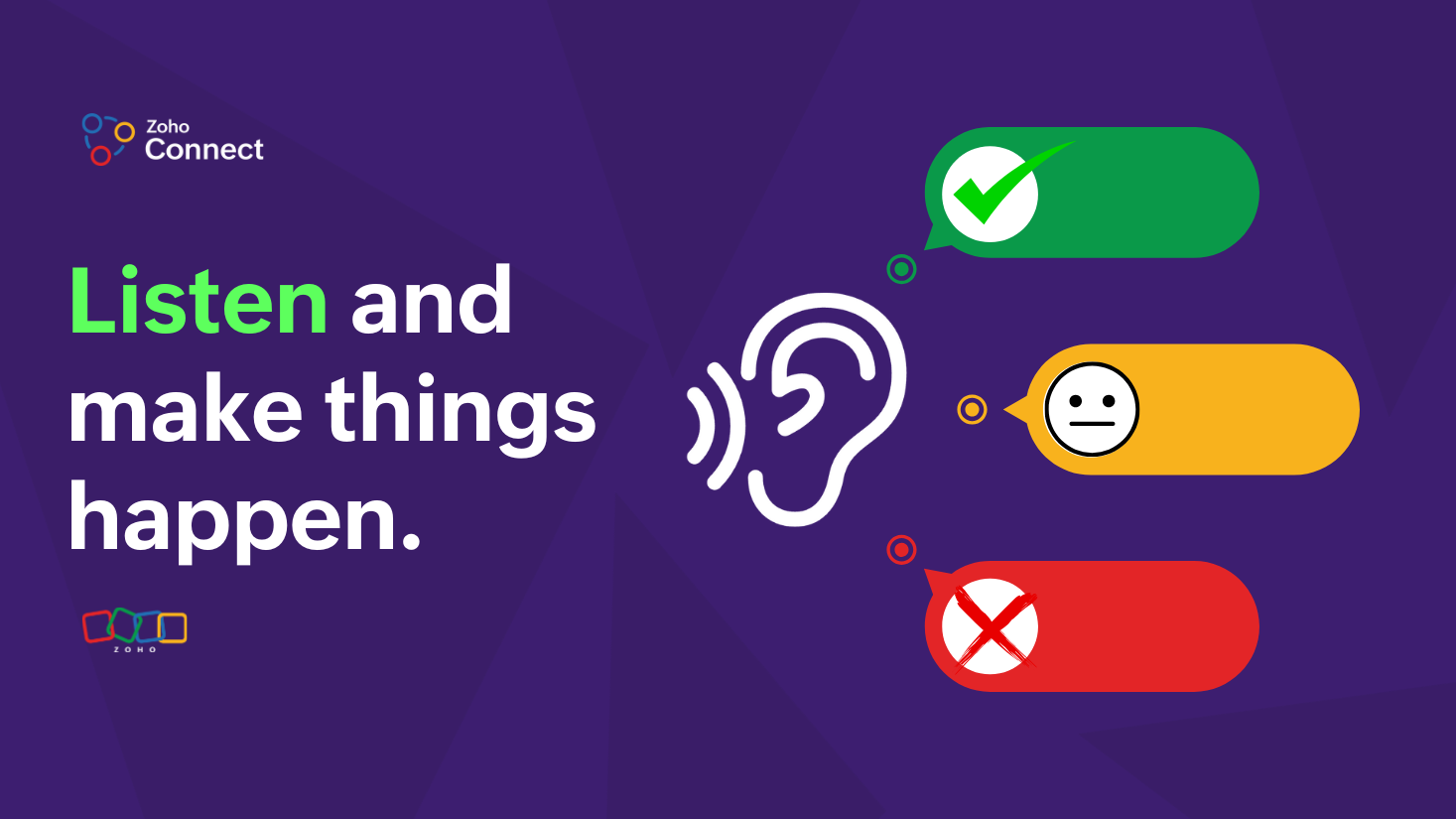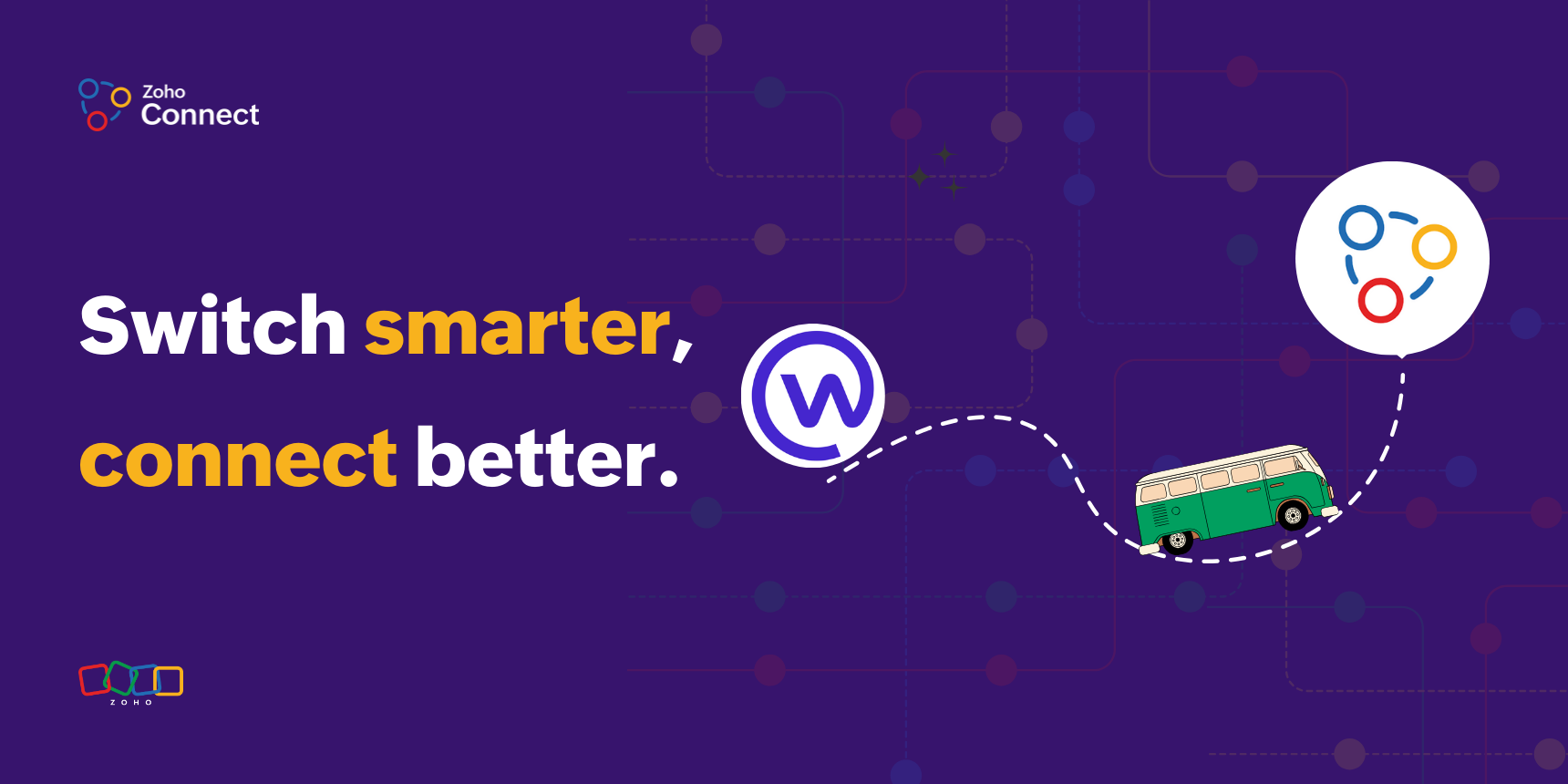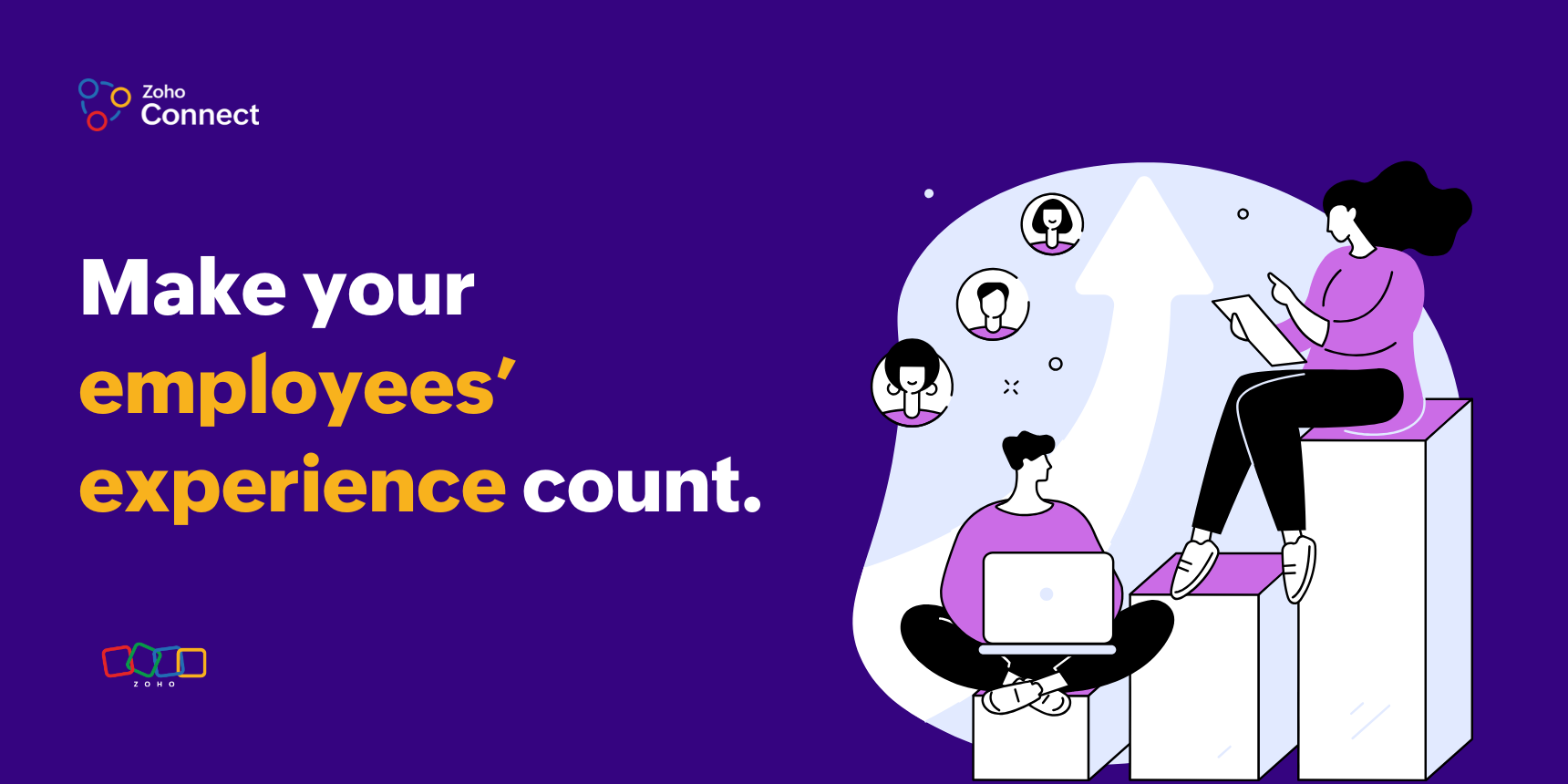- HOME
- More
- Employee Experience
- How listening to employees builds better workplaces
How listening to employees builds better workplaces
- Last Updated : January 10, 2025
- 53 Views
- 5 Min Read

Today’s workplaces are about more than just perks and benefits—they're about creating an environment where employees truly feel valued, heard, and understood. When people believe their voice matters, they become part of something bigger. In fact, 74% of employees say they feel more engaged when their opinions are genuinely considered. Companies that actively listen to their employees foster a stronger sense of belonging, build trust, and pave the way for greater success.
What is employee listening?
Employee listening refers to the systematic approach organizations take to gather, analyze, and act on feedback from their workforce. It involves various methods such as surveys, focus groups, one-on-one meetings, and sentiment analysis tools to understand employee thoughts, feelings, and experiences.
Unlike traditional feedback mechanisms that might be one-off or surface-level, employee listening is continuous and multidimensional. It integrates employees' voices into the organization’s decision-making processes, ensuring their opinions shape policies, culture, and strategies.
Why does employee listening matter?
It improves engagement: When employees know their voices are heard, they feel more connected to the organization. Gallup reports that highly engaged workplaces see 21% higher profitability.
It drives innovation: Employees are often closest to the day-to-day challenges and opportunities. Listening to them can uncover innovative ideas that might otherwise go unnoticed.
It builds trust: Open communication and responsiveness create a culture of trust, making employees feel secure in sharing their honest opinions. Studies show that trust boosts employee productivity by 50%.
It supports retention: Employees who feel valued are 4.6 times more likely to perform their best work and less likely to seek opportunities elsewhere.
It enhances employer branding: Companies known for listening to their employees attract top talent because they’re perceived as organizations that genuinely care about their workforce.
How can workplaces listen to employees?
Listening to employees is one of the most important aspects of building a healthy workplace. When employees feel heard, they’re more engaged, productive, and loyal. But listening is more than just paying attention; it’s about creating opportunities for open dialogue and acting on the feedback you receive. Let’s explore some practical ways workplaces can truly listen to their employees.
1. Provide multiple ways to share feedback
Not everyone feels comfortable speaking up in the same way. Some employees prefer face-to-face discussions, while others may be more comfortable sharing thoughts through employee experience platforms like Connect. By offering various feedback channels, you can ensure that every voice is heard.
- Interactive spaces: Create forums or chat spaces where employees can share their ideas casually or brainstorm solutions together.
- Team feedback sessions: Dedicate a portion of team meetings to encourage open discussions about what’s working and what needs improvement.
- 360-degree feedback: Implement a system where employees receive input from peers, managers, and subordinates, providing a well-rounded view of their performance.
2. Use technology for ongoing feedback
Modern tools make it easier than ever to gather employee input regularly and analyze trends over time.
- Pulse surveys: These quick, frequent surveys help measure employee sentiment and satisfaction on specific topics or changes.
- Sentiment analysis: Employee experience platforms with built-in sentiment analysis can track workplace mood and highlight areas for improvement.
- Open-ended questions: By asking open-ended questions on an employee experience platform like Connect, employees can speak their minds, giving you valuable insights into the workplace culture and what's really happening.
3. Host engaging town halls and AMA sessions
Interactive sessions with leadership are an excellent way to connect with employees and address their concerns.
- Employee panels: Invite employees to join panels where they can share their perspectives and ideas with leadership.
- AMA sessions: Allow employees to ask questions directly or submit them to encourage participation.
- Live polls: Use polls during the session to involve employees in decisions so they feel heard.
- Follow-up actions: After the session, share what you’ve learned and the steps you plan to take based on employee input.
4. Normalize regular feedback exchanges
Feedback shouldn’t be a one-time event; it needs to be part of the workplace culture.
- Frequent manager check-ins: Regular one-on-ones provide a structured opportunity for employees to share updates or voice concerns.
- Peer feedback: Encourage teams to exchange constructive feedback during retrospectives or project reviews.
- Training for leaders: Equip managers with the skills to ask the right questions and listen empathetically.
5. Involve employees in decision-making
Employees are more likely to feel valued when they’re part of decisions that impact them.
- Idea sharing platforms: Use tools like Zoho Connect to encourage employees to share ideas and solutions.
- Focus groups: Form small groups to gather detailed insights on upcoming changes or challenges.
- Surveys before policies: Before rolling out new policies, ask employees for their input through surveys or polls.
6. Show that feedback leads to action
Listening is only effective if it’s followed by action. Employees need to see that their input has a real impact.
- Acknowledge feedback: Publicly thank employees for their suggestions during meetings or through internal communication channels.
- Act quickly on small wins: Implement smaller suggestions quickly to show responsiveness.
- Communicate progress: Regularly update employees on the changes being made based on their feedback.
7. Recognize and appreciate employees
Sometimes listening is about showing gratitude for the work employees do. Simple gestures can make a big difference.
- Highlight contributions: Celebrate milestones during team meetings or through company-wide communications.
- Personalized thank-yous: A simple thank-you note or email acknowledging their efforts can go a long way in making employees feel valued.
- Celebrate wins: Whether big or small, celebrate wins as a team to build morale and a sense of belonging.
The benefits of employee listening
- Improved employee engagement: Listening creates a positive feedback loop—when employees feel valued, they're more engaged. Engaged employees are 17% more productive and less likely to leave their jobs, according to research.
- Stronger organizational culture: A workplace that prioritizes listening fosters an inclusive culture where everyone feels they belong. This culture not only attracts top talent but also encourages collaboration and teamwork.
- Increased employee well-being: By addressing employees' concerns and understanding their challenges, organizations can take proactive measures to improve mental health and well-being. For instance, companies that actively listen report a 20% increase in employee satisfaction scores.
- Enhanced decision-making: Employee insights provide valuable data points that can guide strategic decisions. From refining workflows to launching new initiatives, organizations can align their actions with the needs of their workforce.
- Reduced turnover: By listening and responding to their needs, organizations can build loyalty and reduce recruitment costs.
- Better customer satisfaction: Happy employees lead to happy customers. When employees feel valued and supported, they're more likely to provide excellent service, resulting in satisfied customers and improved business performance.
- Continuous improvement: Employee listening promotes a growth mindset within organizations. The continuous feedback loop encourages adaptability and helps organizations stay ahead in a competitive market.
Conclusion
Employee listening isn't a one-time effort but a continuous commitment to understanding and valuing the workforce. By implementing effective listening strategies, workplaces can create environments where employees thrive and contribute to long-term success.
Organizations that embrace this practice will not only improve their internal culture but also strengthen their position in the market. As the saying goes, “The best way to predict the future is to create it,” and by listening to employees, organizations can create a future that benefits everyone.
Take the first step today with Zoho Connect—a platform designed to make employee listening easy, meaningful, and impactful.











